This Classic Vanilla Cake recipe keeps things simple while delivering incredible flavor and texture. When I was testing it, I kept getting requests for the recipe because everyone loved how soft the crumb was and how the rich vanilla flavor set it apart from any basic cake. The secret’s in the buttermilk, which keeps it tender and moist, and in whipping the butter, sugar, and eggs until light and airy, which gives the cake a fluffy crumb. My easy vanilla cake recipe is perfect for beginners, surprisingly budget-friendly, and SO easy to make (say good-bye to those store-bought cake mixes forever!)
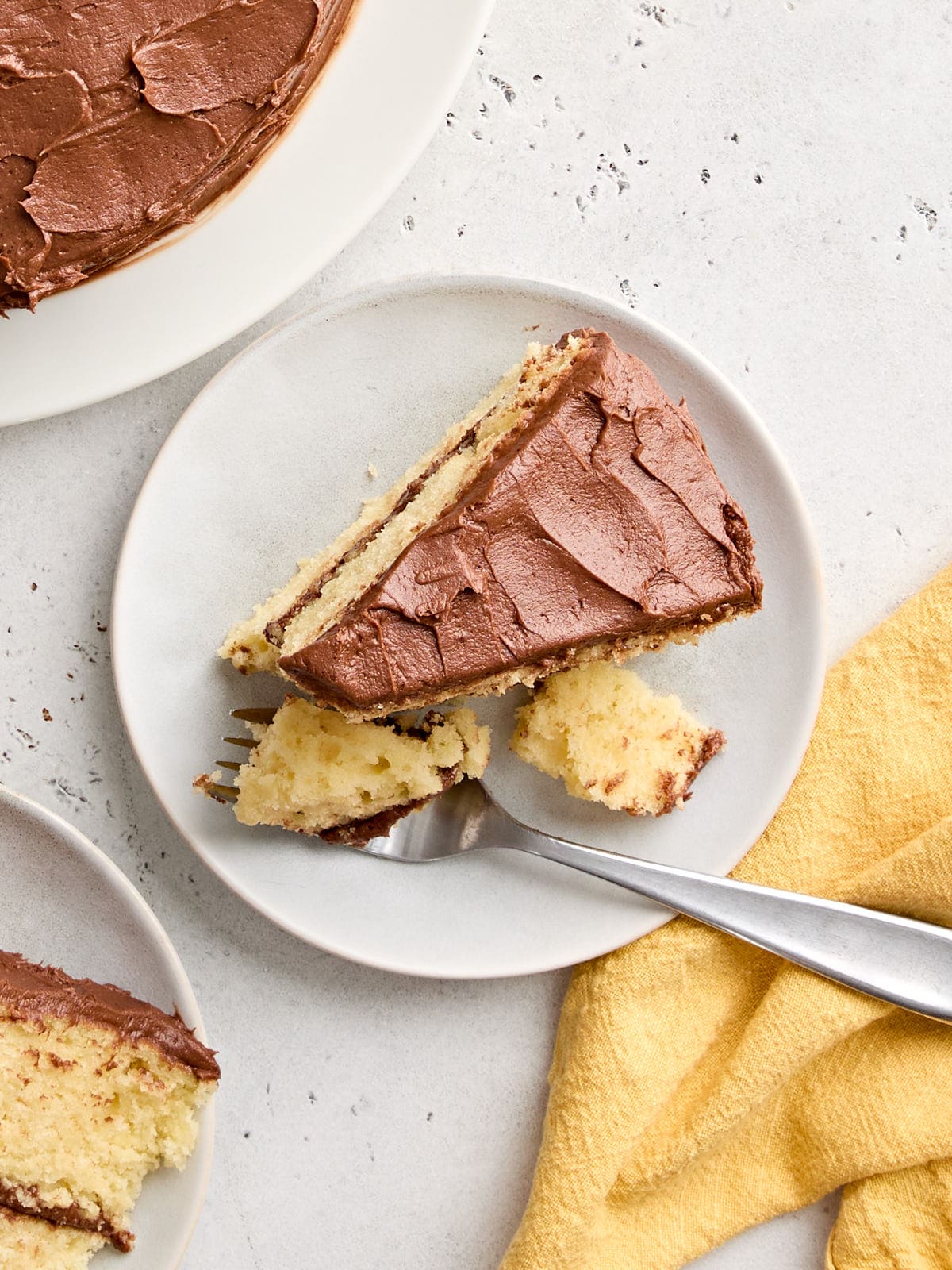
All recipes are rigorously tested in our Nashville Test Kitchen to ensure they are easy, affordable, and delicious.
Buttery Vanilla Cake from Scratch
This homemade vanilla cake is seriously soft, moist, and packed with warm vanilla flavor (and I’m NOT exaggerating here!!) The crumb is tender but sturdy enough to stack, making it a great birthday cake or any celebration cake where you want something that tastes as good as it looks. I love that it’s versatile too. You can keep it simple with a dusting of powdered sugar, or go all out with chocolate buttercream, fresh fruit, or clouds of whipped cream. And because I don’t do fussy, this vanilla cake recipe is straightforward to make and comes out delicious every time.
Classic Vanilla Cake
Cost $5.54 recipe / $0.54 serving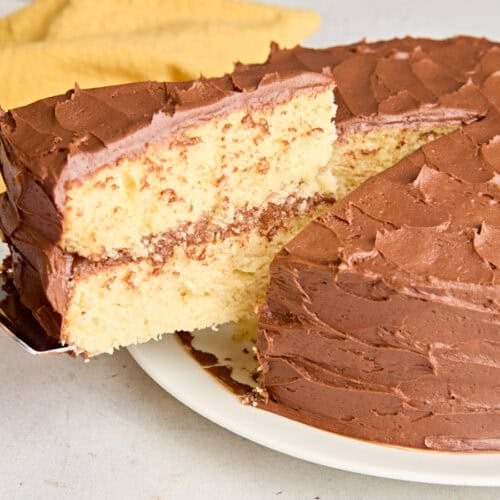
Ingredients
- ½ cup butter (unsalted (room temperature, 113g) $0.99)
- ½ cup vegetable oil (4 oz, $0.33)
- 1½ cups granulated sugar (300g, $0.57)
- 4 eggs ($1.16)
- 2 Tbsp vanilla extract ($1.18)
- 2⅔ cups all-purpose flour (400g, $0.58)
- 2 tsp baking powder ($0.07)
- 1 tsp salt ($0.02)
- 1⅓ cups buttermilk (room temperature, (10.6 oz) $0.54)
Instructions
- Gather the ingredients and preheat your oven to 325°F. Lightly grease and flour two 9-inch round cake pans and line the bottom with parchment paper for easy release.
- In a large mixing bowl, use a hand mixer (or stand mixer with the paddle attachment) to beat the butter and oil together until the mixture is smooth and thoroughly combined; this should take about 1–2 minutes. It should look creamy and uniform.
- Gradually add the sugar to the bowl while mixing on medium speed. Once all the sugar is added, increase to medium-high and beat for about 3 minutes, until the mixture is light and fluffy.
- Add the eggs one at a time, mixing well after each addition. Scrape down the sides of the bowl as needed to ensure everything is evenly incorporated.
- Pour in the vanilla extract and mix until just combined.
- In a separate bowl, whisk together the flour, baking powder, and salt. Set aside.
- With the mixer on low speed, alternate adding the buttermilk and the dry ingredients in batches, starting with half the buttermilk, then add half of the flour mixture. Repeat with the remaining buttermilk and then the rest of the flour. Mix just until combined, a few small lumps are okay. Don’t overmix, or the cake may turn out dense.
- Pour the batter evenly into your prepared pans and smooth the top with a spatula. Bake for about 30 minutes, or until the top is golden and the cake springs back when gently pressed in the center. A toothpick inserted should come out clean or with just a few moist crumbs.
- Let the cake cool in the pan for 15 minutes, then carefully turn it out onto a wire rack to cool completely.
- Once the cake is completely cooled, frost with your favorite icing* or enjoy it plain with a dusting of powdered sugar or fresh fruit.
See how we calculate recipe costs here.
Equipment
- Hand Mixer
- Mixing Bowls
- 2 9×9'' Round Cake Pans
- Parchment Paper
Notes
Nutrition
how to make Classic Vanilla Cake step-by-step photos
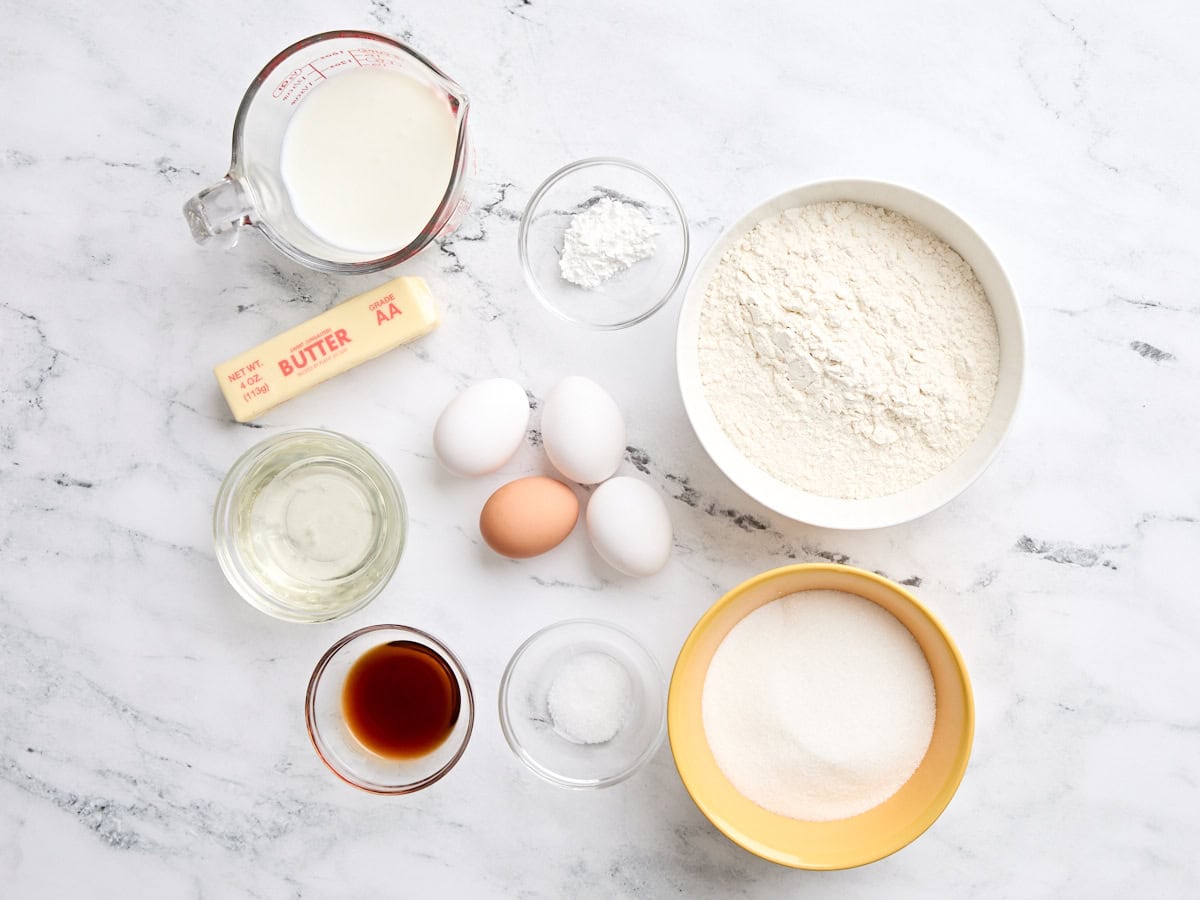
Gather all of your ingredients. Preheat your oven to 325°F and lightly grease and flour two 9-inch round cake pans. Then line the bottom of each cake pan with parchment paper to make it easier to remove your cakes after baking.
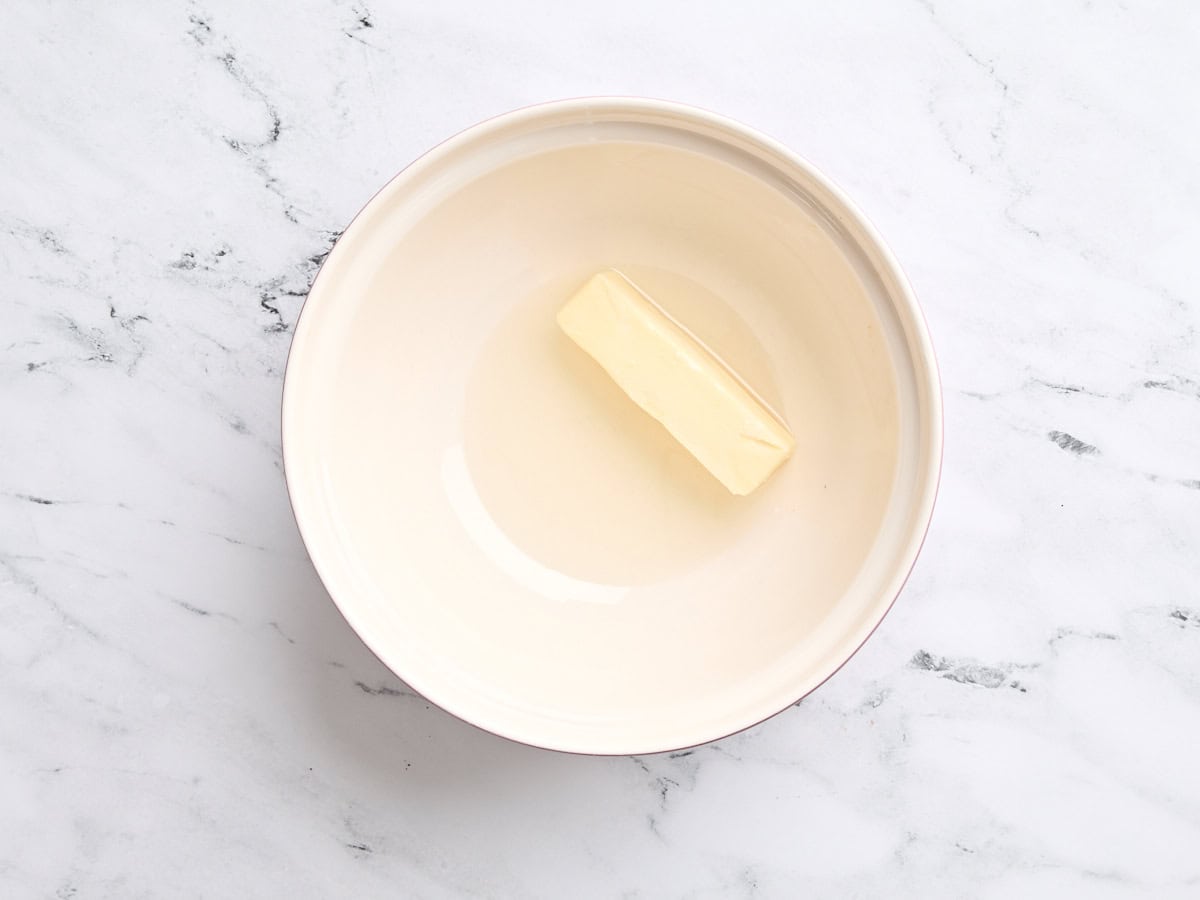
Beat the butter and oil: Add ½ cup room temperature unsalted butter and ½ cup vegetable oil to a large mixing bowl. Using a hand mixer (or stand mixer with the paddle attachment), beat the butter and oil together until smooth and combined, about 1-2 minutes. It should be nicely creamy and uniform.
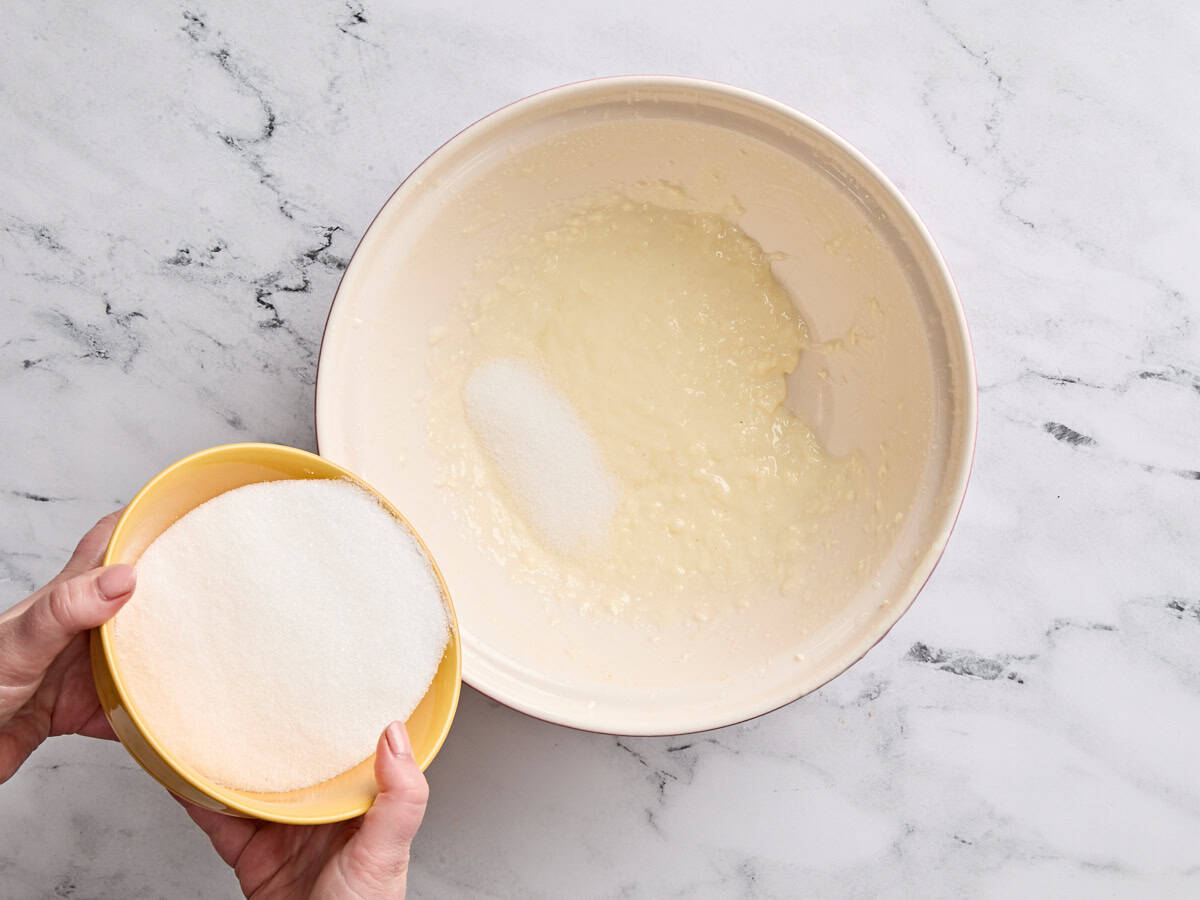
Cream the sugar: Slowly add 1½ cups granulated sugar to the butter-oil mixture while mixing on medium speed. When all the sugar is added to the bowl, increase the speed to medium-high and beat for about 3 minutes until light and fluffy.
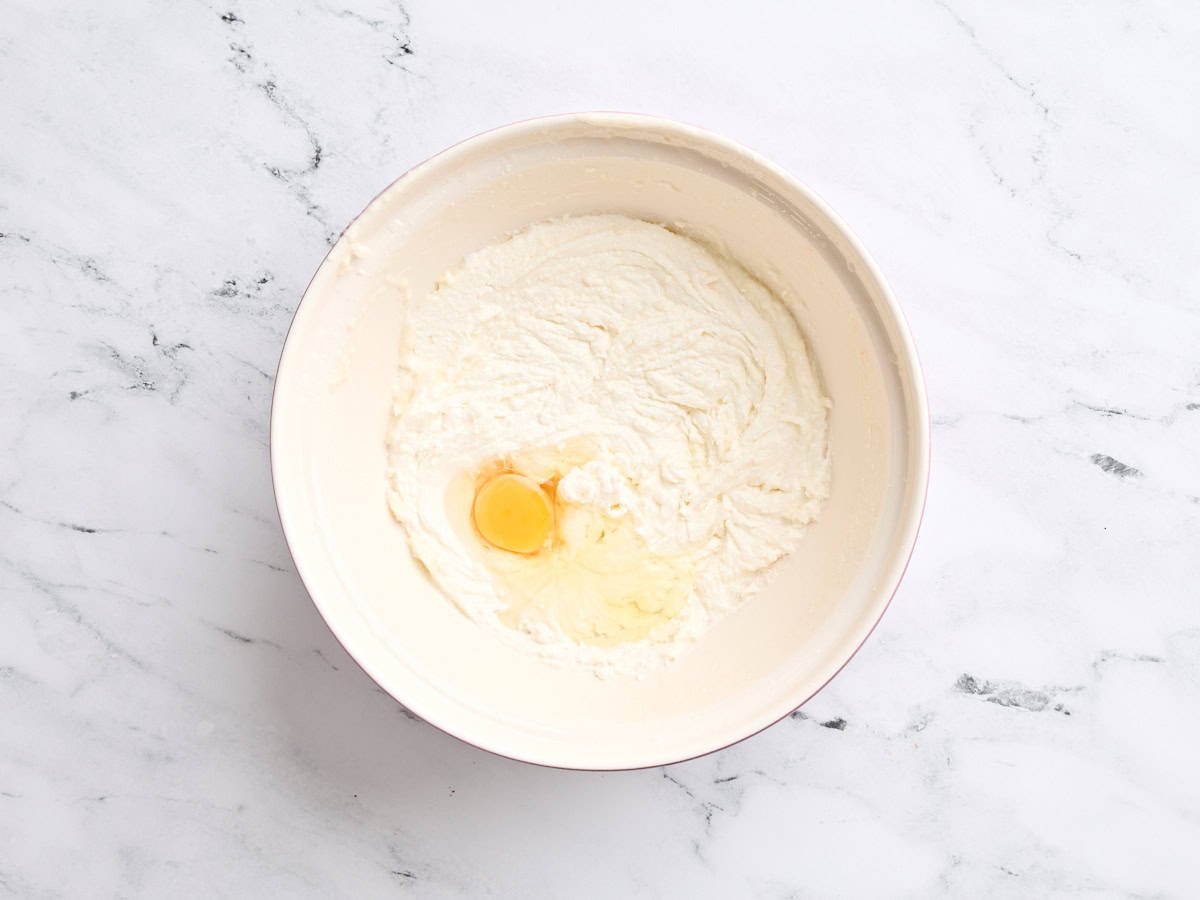
Add the eggs: Now add one egg at a time, mixing well after each addition. Be sure to scrape down the sides of the bowl as needed to ensure everything is evenly incorporated. You need 4 eggs total.
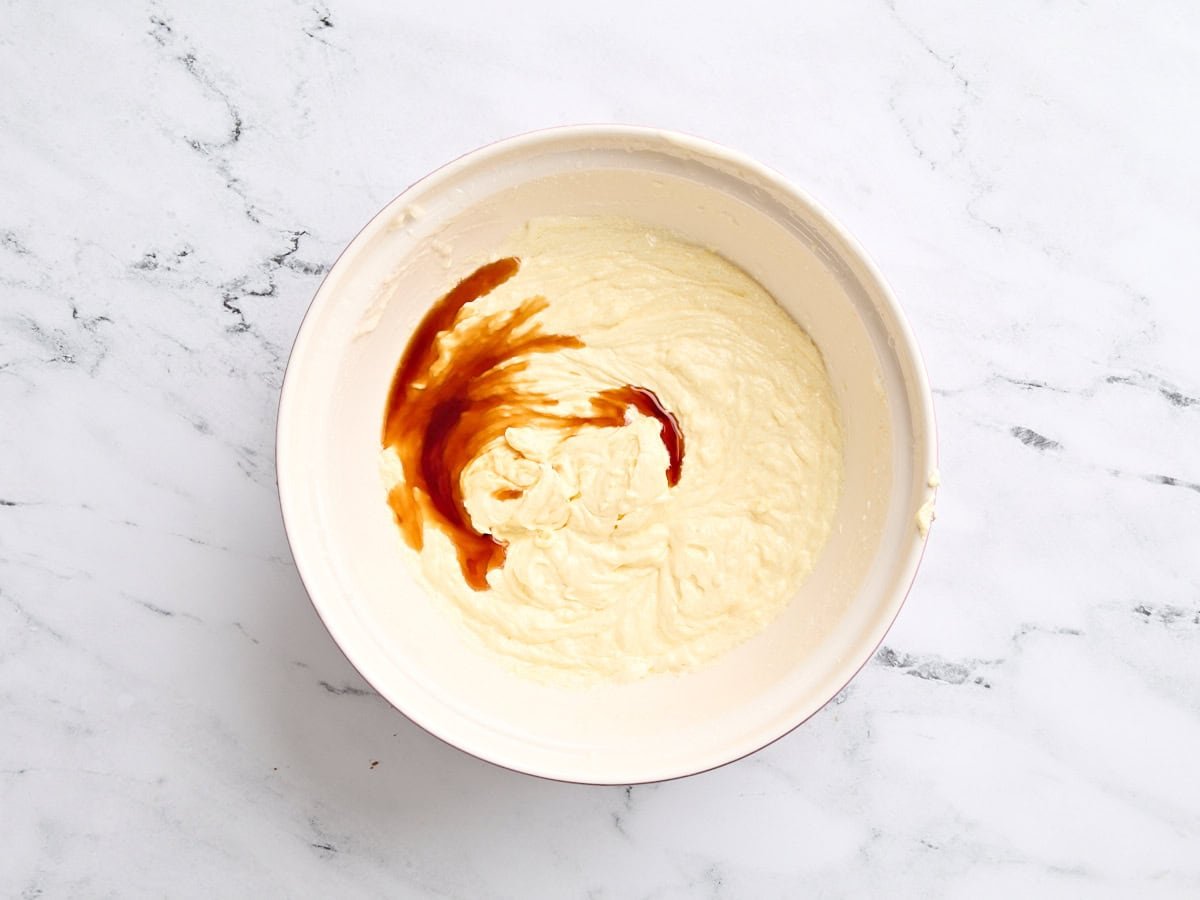
Finish making the batter: Add 2 Tbsp vanilla extract and mix until just combined.
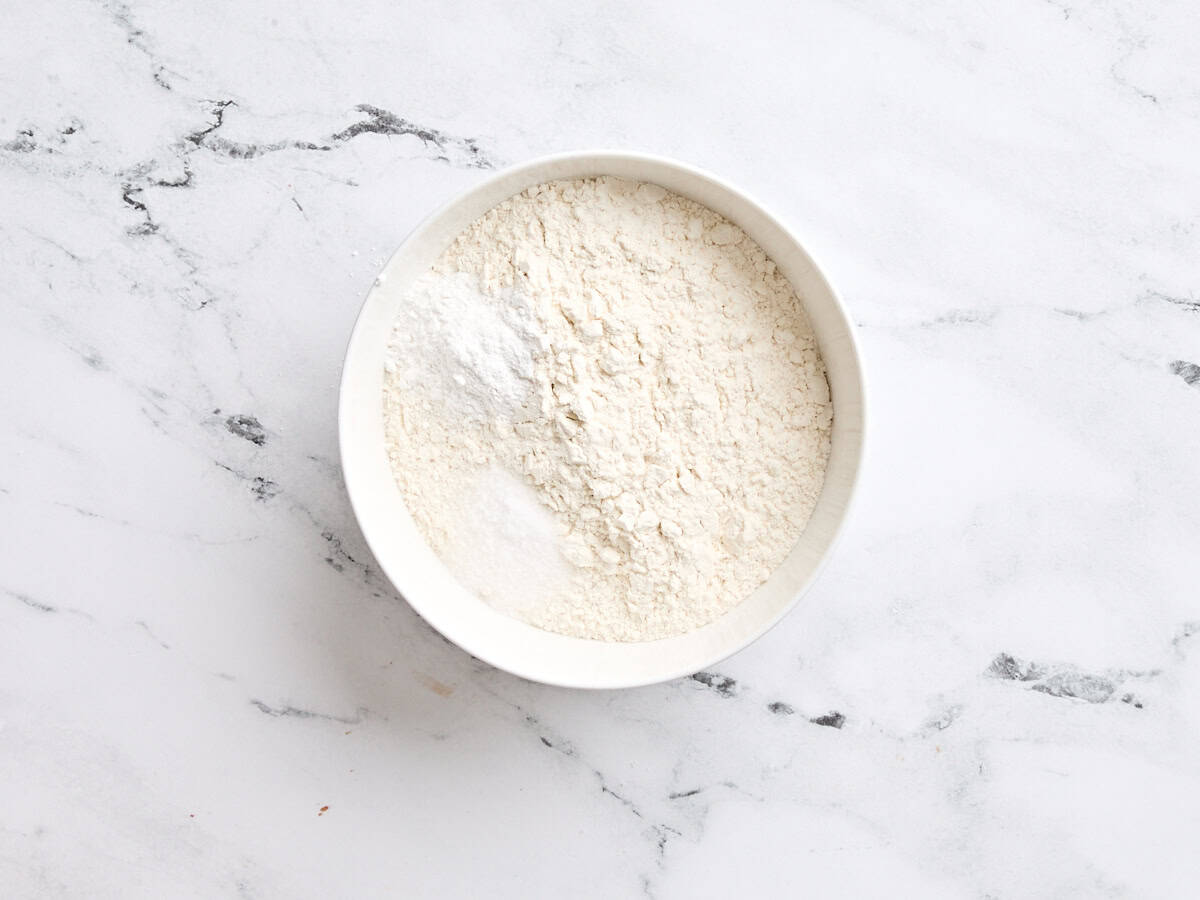
In a different bowl, add 2⅔ cups all-purpose flour, 2 tsp baking powder, and 1 tsp salt. Whisk together and set aside.
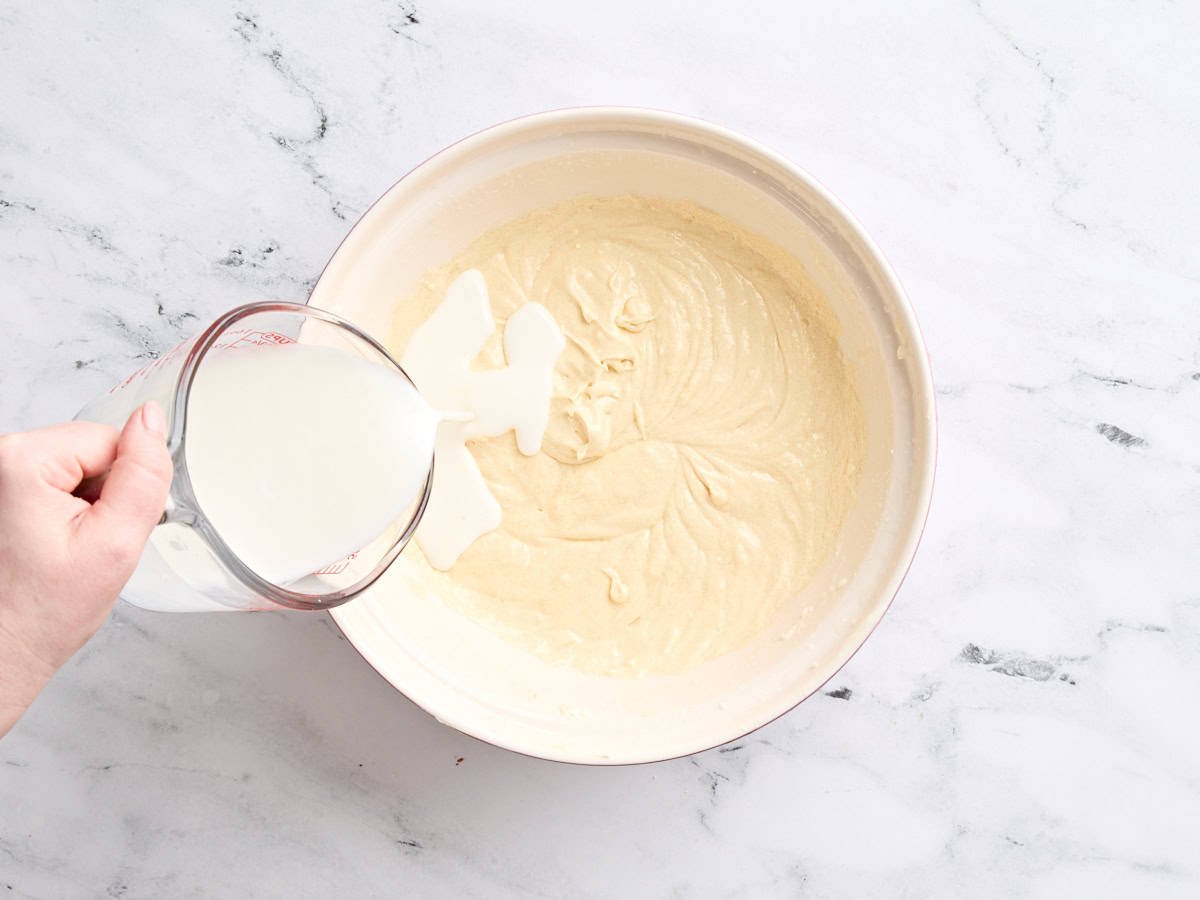
Now with your mixer on low speed, alternate adding the buttermilk and dry ingredients in batches. Start by adding half the buttermilk.
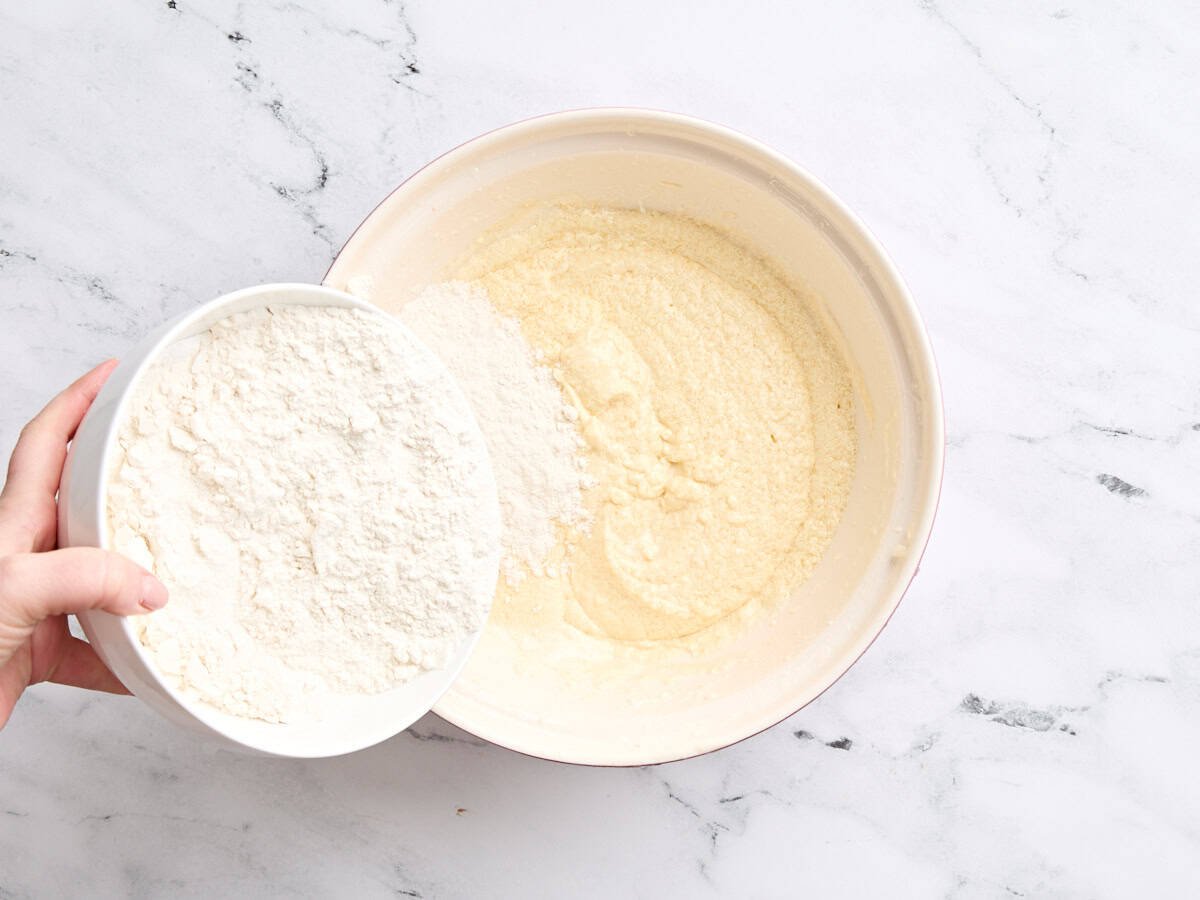
Then add half the flour mixture. Repeat with the remaining buttermilk and then the rest of the flour. Mix just until combined; a few small lumps are okay. Don’t overmix, or the cake may turn out dense.
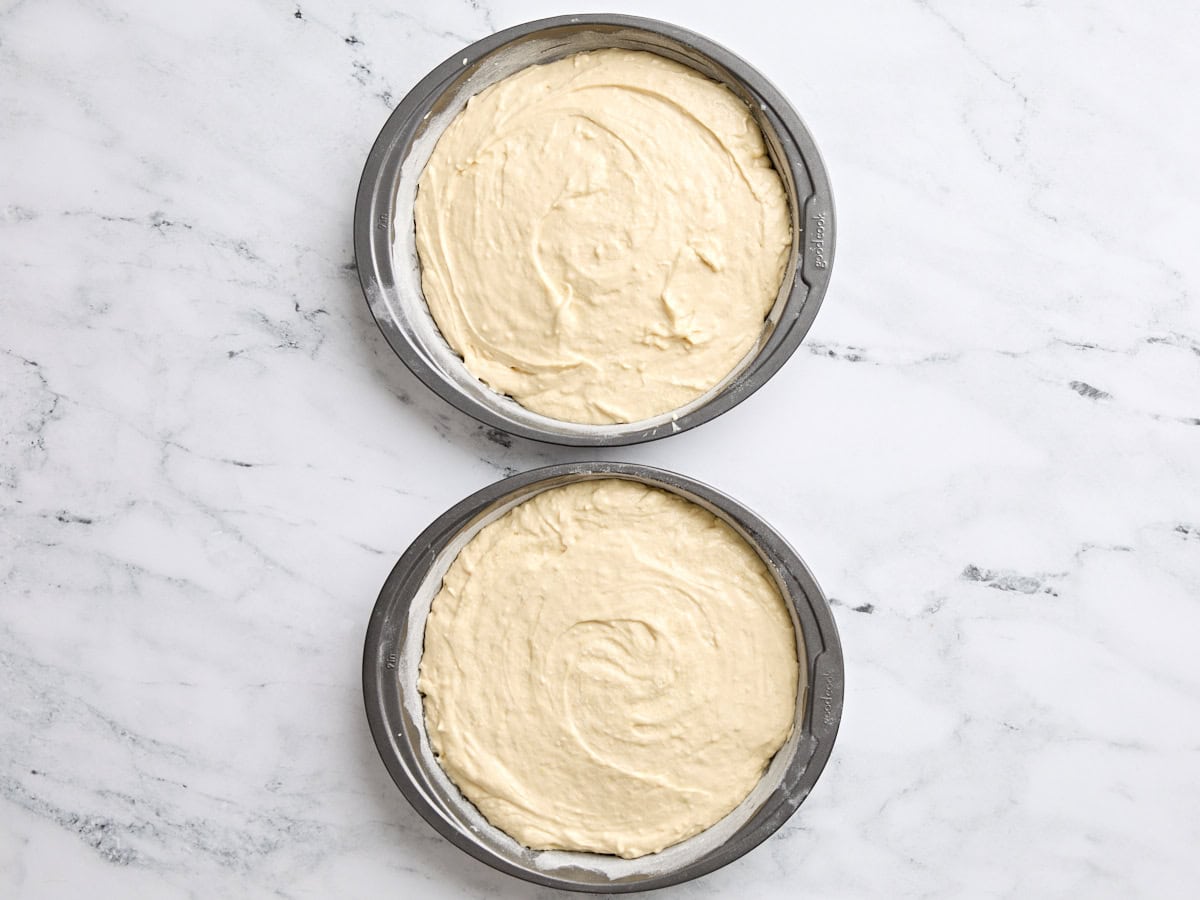
Bake the cakes: Pour the batter into your prepared pans and smooth the top with a spatula. Place both cake pans into your preheated oven and bake for 30 minutes, or until the top is golden and the cakes spring back when gently pressed in the center. If you insert a toothpick into the center, it should come out clean or with a few moist crumbs.
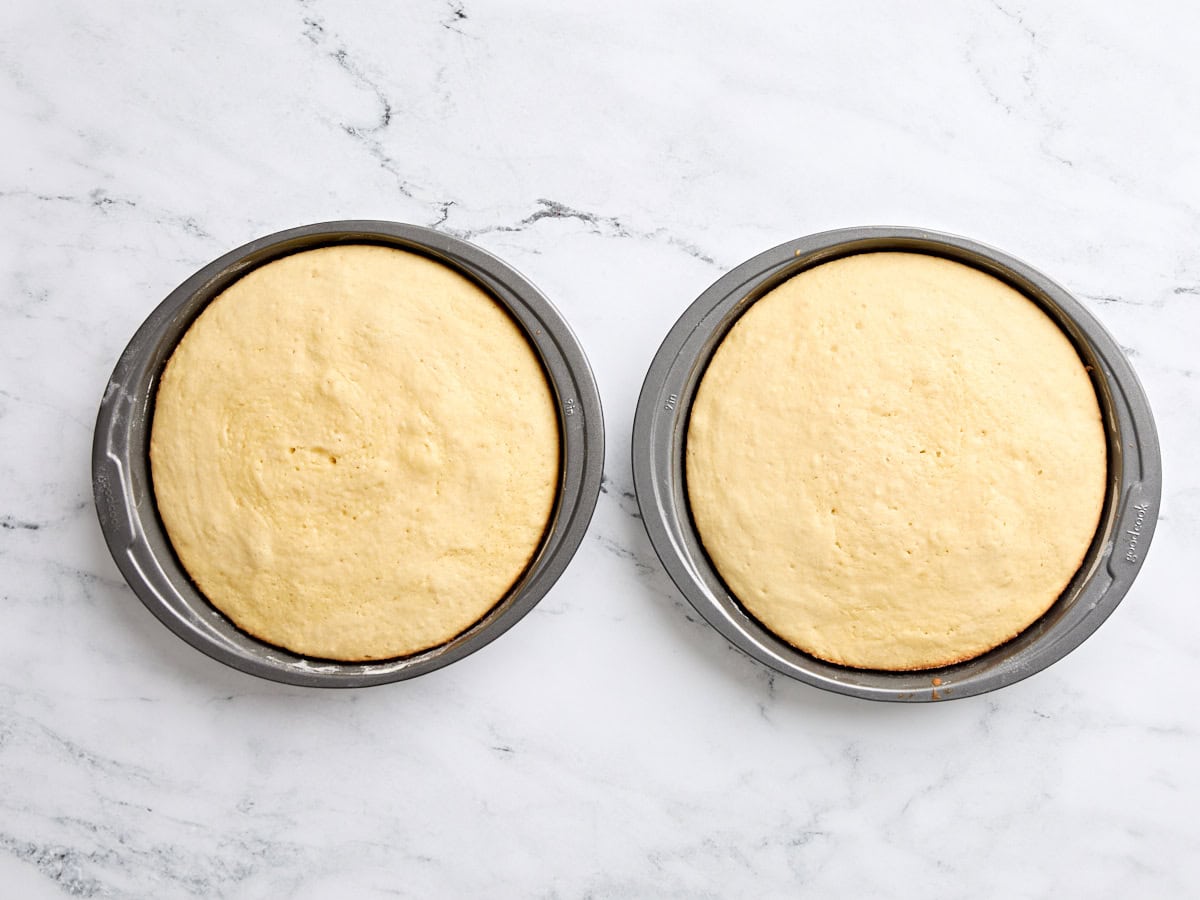
Let the cakes cool: Allow the cakes to cool in the pans for 15 minutes.
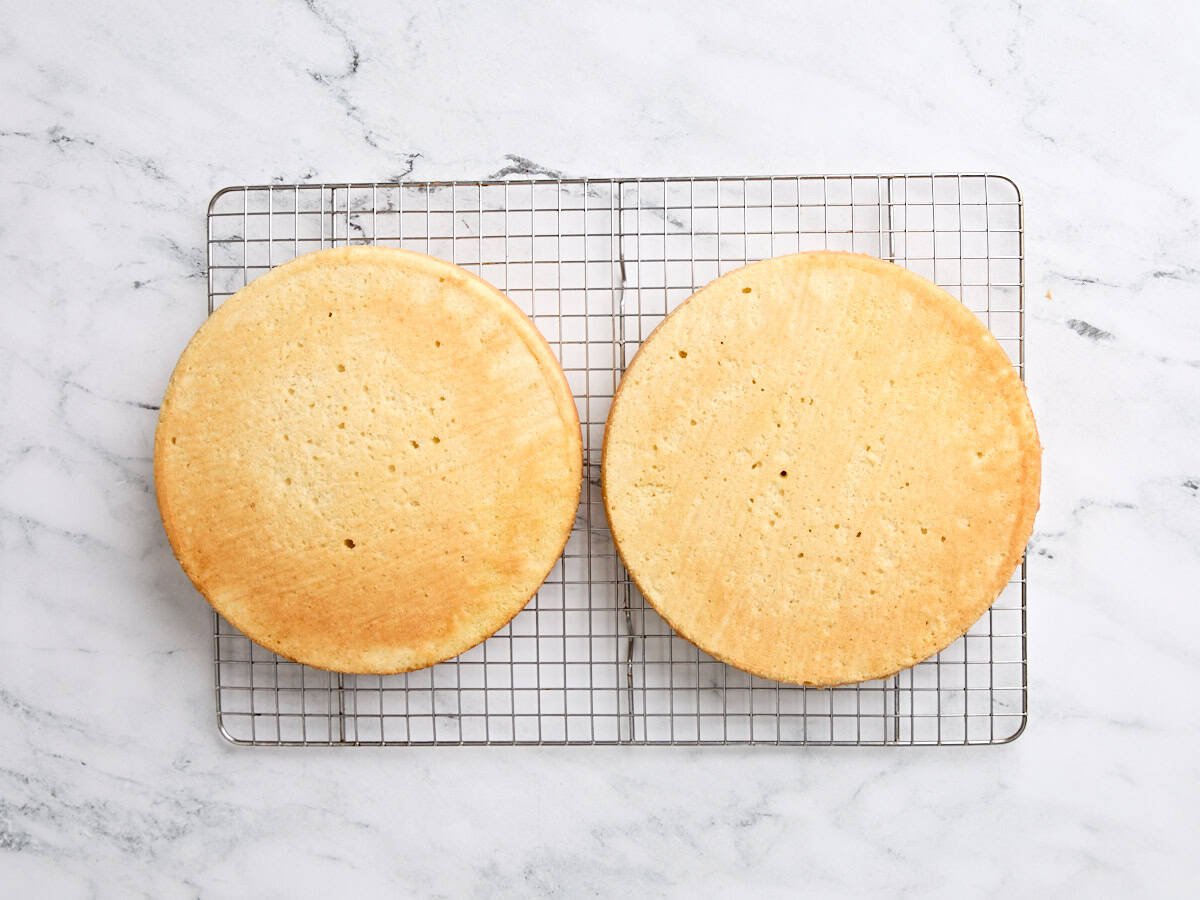
After 15 minutes, carefully turn them out onto a wire rack to cool completely.
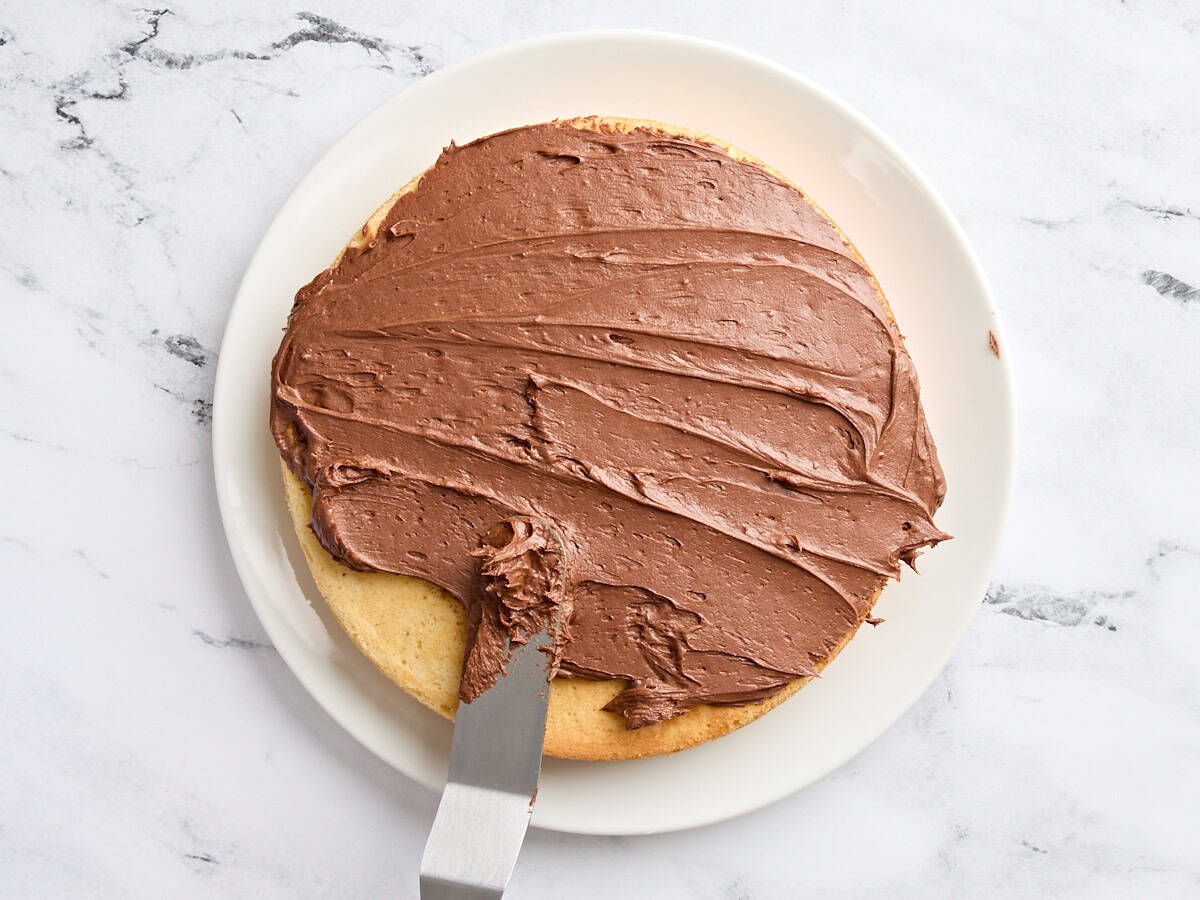
Frost the cakes (optional): When cooled, frost the cakes with your favorite icing or enjoy it plain with a dusting of powdered sugar or fresh fruit! If you’re making a layer cake, add some frosting on top of one cake (if your cake has domed slightly, you can slice the dome off for a flat surface).
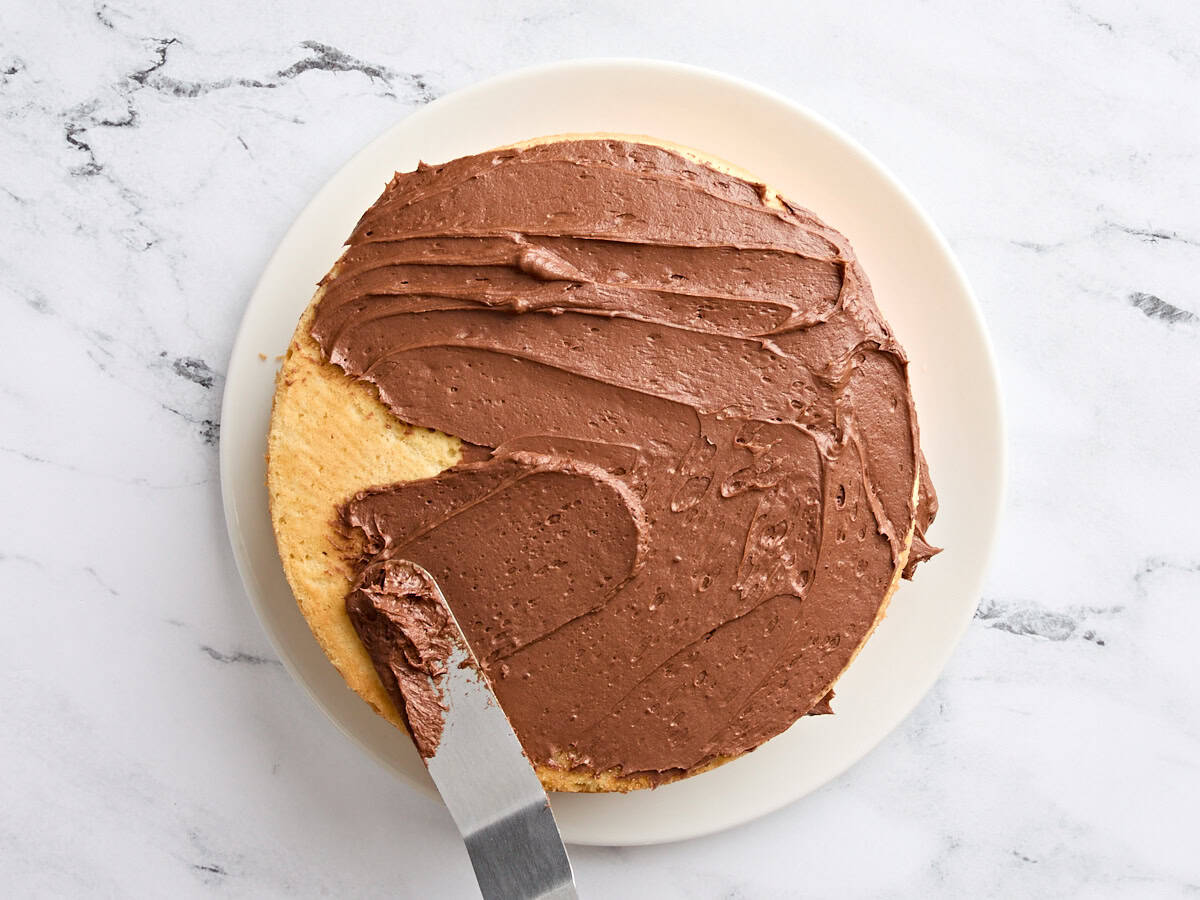
Then place the second cake on top of the frosted cake to create two layers. Finish with the remaining frosting, covering the top and sides of the cake.
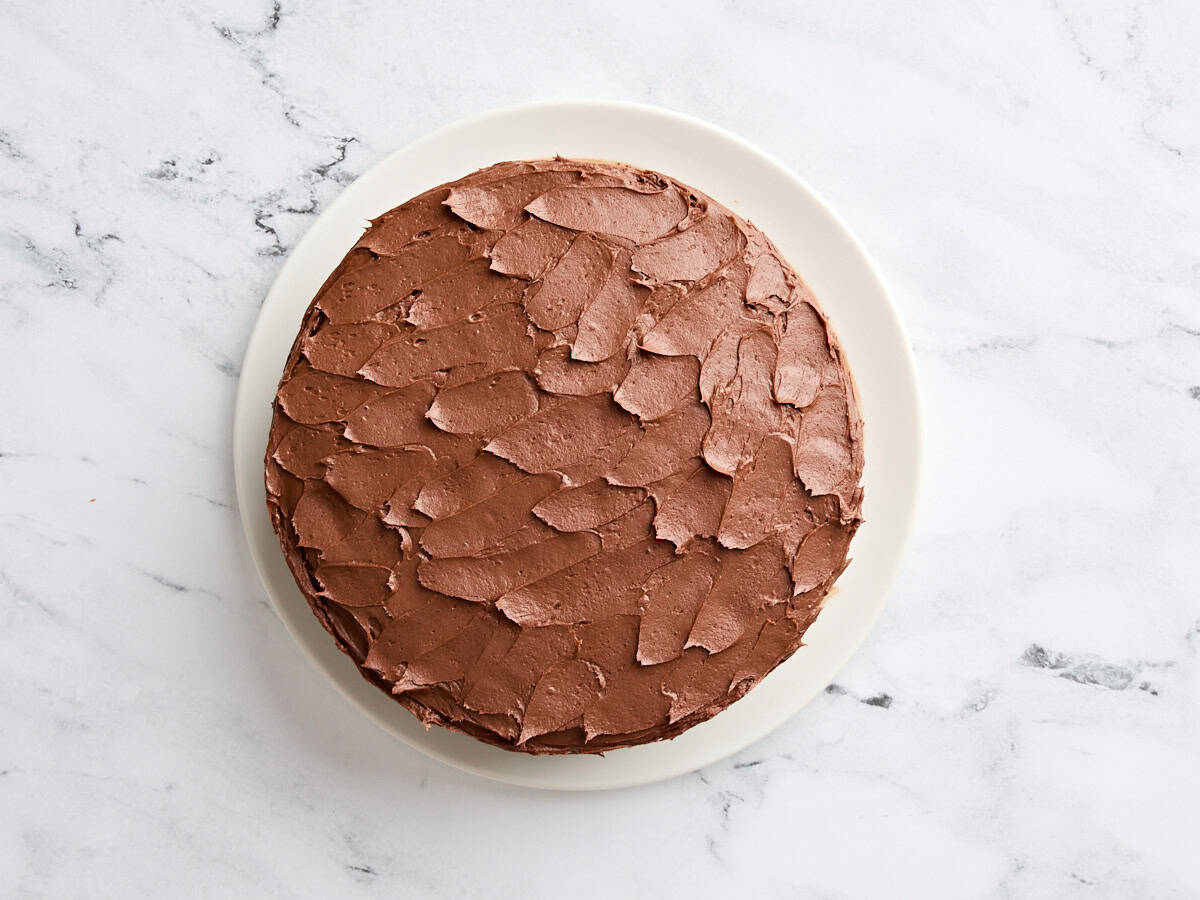
Now serve and enjoy your homemade vanilla cake!
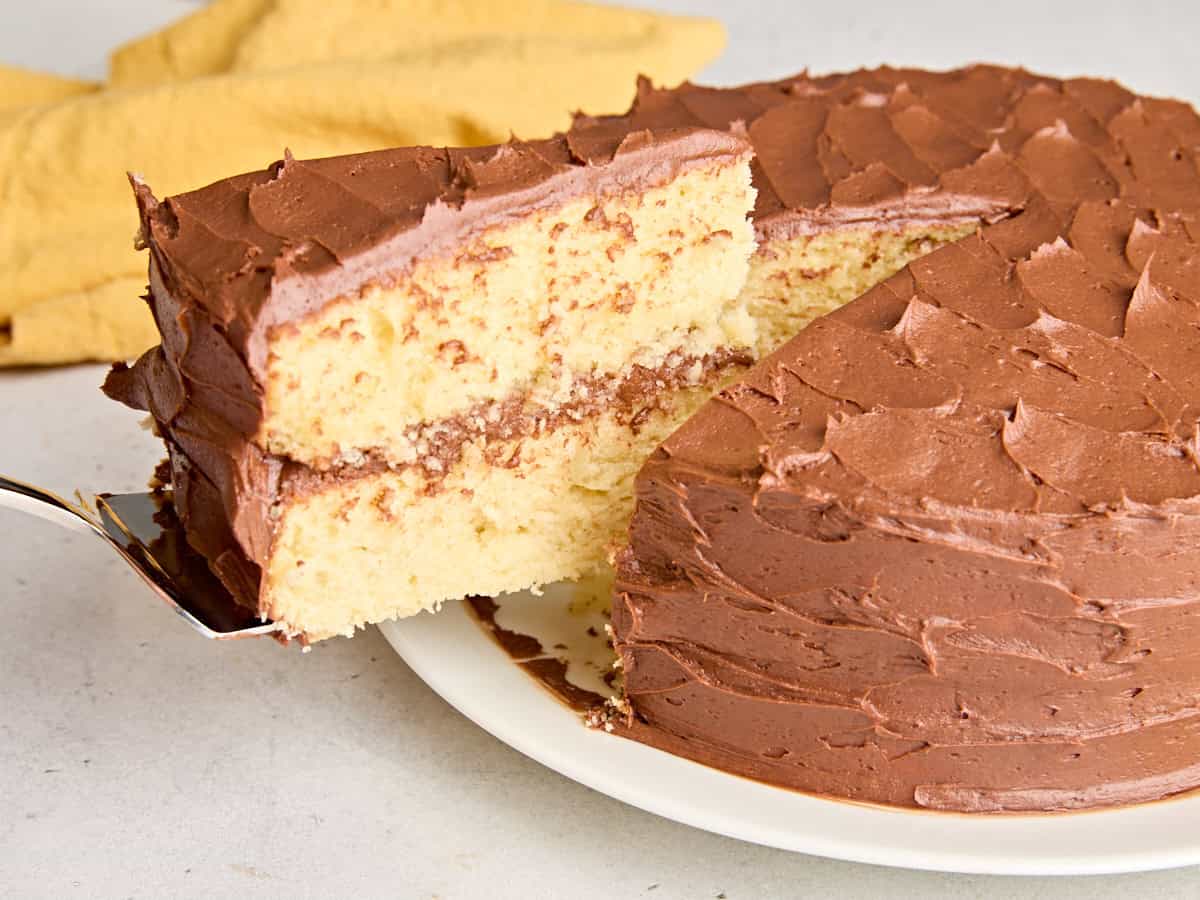
Can I Use A Different Cake pan?
This recipe makes two 9-inch round cakes, which is great if you want a classic two-layer cake. If you only need one cake, you can halve the recipe and bake it in one 9-inch round cake pan, or make the whole batch and bake it in a 9×13-inch pan.
For the 9×13, bake at 325°F for 35–40 minutes, and start checking with a toothpick around the 35-minute mark. The larger, shallower pan bakes the cake a little faster and more evenly.
You can also use this simple vanilla cake recipe to make cupcakes! Bake them at 350°F for 18–20 minutes and check early so they don’t overbake.
Recipe Success Tips
- Follow the recipe as written. Baking is a science, so small changes can throw off the texture or structure of the cake. I tested this recipe for vanilla cake again and again, so you don’t have to guess! Stick to the measurements and steps as written for the best results.
- Double-check your baking powder. Old baking powder can lose its oomph, which means your cake might not rise properly. Check the use-by date or test it by stirring ½ teaspoon into some hot water. If it bubbles right away, it’s still good to use.
- Use unsalted butter. I use unsalted butter and add salt to the batter myself. The amount of salt in salted butter can vary from brand to brand, so adding the salt separately helps control the flavor.
- Make sure your ingredients are at room temperature. Room temperature butter and buttermilk mix together more smoothly and creates a light, even crumb.
- Add the eggs one at a time. This helps them incorporate evenly into the batter, giving the cake a uniform texture and better rise.
- Don’t overmix the batter once the flour is added. Overmixing develops the gluten in the flour, which is one of the biggest causes of a dense cake crumb! Mix until the flour is just combined. A few small lumps is okay.
- Use a dry measuring cup to measure the batter when adding it to the cake pans. This trick helps you get even layers that cook at the same rate.
- Let the layers cool completely before frosting. If the cake is even a little warm, the frosting will melt and slide off. I wait until the layers feel cool to the touch before I start decorating.
Frosting & Decorating Ideas
This classic vanilla cake is delicious no matter how you serve it. I sometimes dress it up for a special occasion, or sprinkle it with powdered sugar for a simple (yet delicious!) option. Here are some frosting and decorating ideas to try:
- Vanilla buttercream
- A classic cream cheese frosting (see our carrot cake recipe)
- Chocolate buttercream
- Whipped cream and fresh fruit
- Chocolate ganache
- Spread strawberry jam between the cake layers
- Powdered sugar glaze
- Honey buttercream
- Top with sprinkles and any frosting you want (perfect for a vanilla birthday cake!)
- Make it a ‘naked cake’ by spreading on a very thin layer of your chosen frosting so the cake layers peep out underneath
- Or, chop your vanilla cake up and use it to make a berry trifle!
Storage Instructions
At room temperature, you can keep the unfrosted cake tightly wrapped or stored in an airtight container for up to 3 days. If you top your vanilla cake with cream cheese frosting or fresh fruit, store it in the fridge for 3-5 days and bring it to room temperature before serving.
Unfrosted layers can be wrapped in plastic and foil, frozen for up to 1 month, then thawed overnight in the fridge. Frosted cakes can also be frozen. Chill until the frosting is firm, wrap well, freeze for up to 1 month, and thaw overnight before serving.


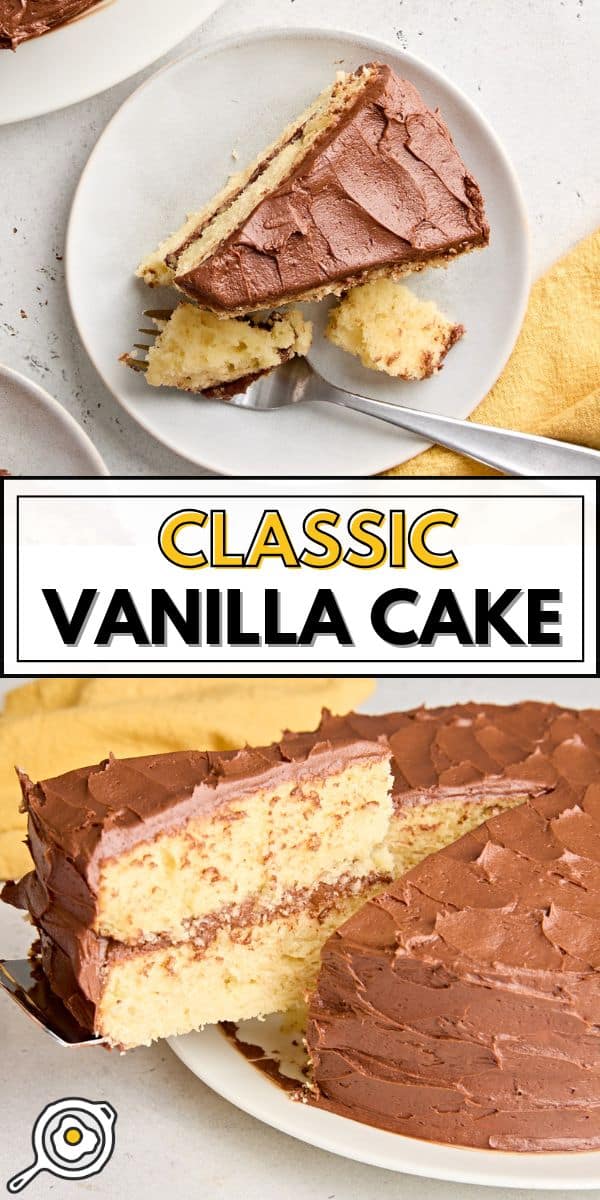
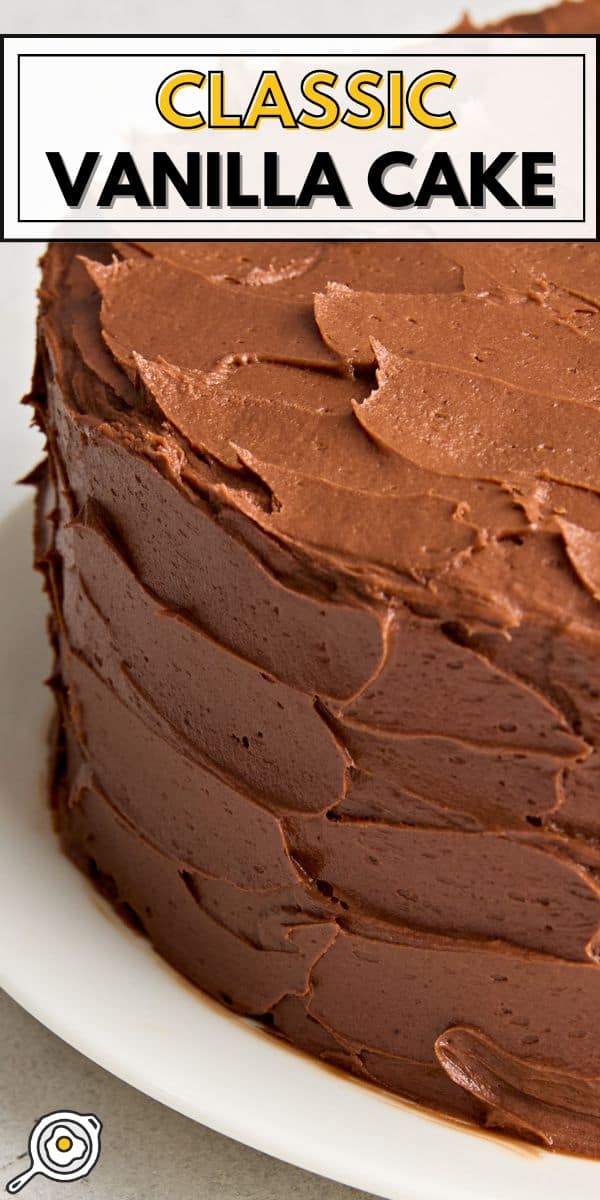
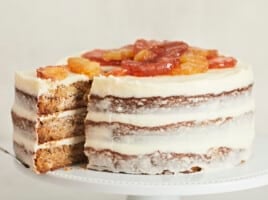
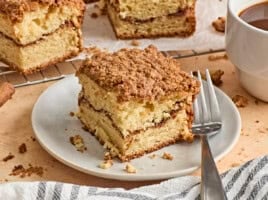
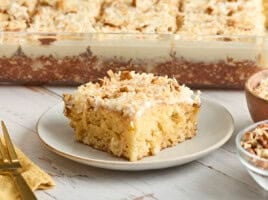
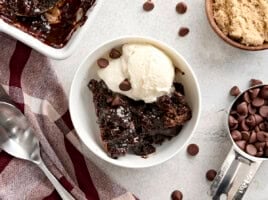
I made this for my sons 14th birthday and all of my family loved it! Great flavor, moist, fluffy and was perfect size. I did make this in a basic rectangle cake pan I steady of two rounds, just added a few mins to bake time. Thankyiu for sharing!
I want bake it
Will definitely be trying this gorgeous looking cake!!! Love butter vanilla cakes
I made this cake today and it was delicious. I followed the recipe exactly and it turned out perfectly. I will definitely make again and it is now my favourite vanilla cake to make. I also made the chocolate buttercream icing, super delicious.
Thank you so much! I am so happy you enjoyed it, it’s become a favorite among my family as well!
1/2 cup of butter is not 320 grams. Try 115 grams. Which is it? Typo!?
You’re correct, thanks for catching that! We’re adjusting the grams, that’s a typo. It should be 1/2 cup or about 113g.